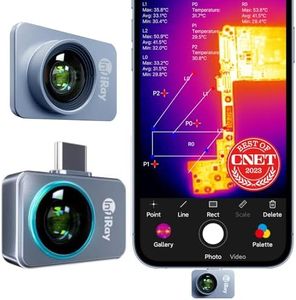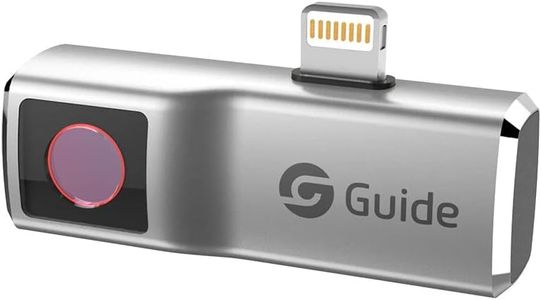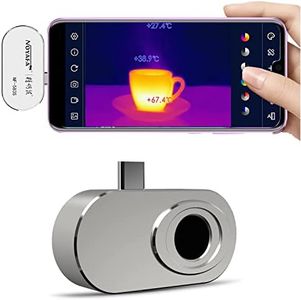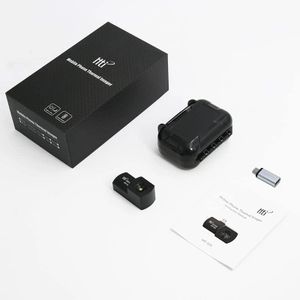We Use CookiesWe use cookies to enhance the security, performance,
functionality and for analytical and promotional activities. By continuing to browse this site you
are agreeing to our privacy policy
8 Best Infrared Camera For Phone
From leading brands and best sellers available on the web.Buying Guide for the Best Infrared Camera For Phone
Choosing an infrared camera for your phone can be a fantastic way to expand its capabilities, especially for uses like detecting heat loss, monitoring electrical systems, or even exploring the outdoors at night. Since these devices connect to your phone—typically via USB or a similar port—it's important to focus on what you want to use it for. Pay attention to the core specifications, as these will impact the performance and usefulness of the camera in different situations. Comparing features carefully will help you pick a model that suits your specific needs.ResolutionResolution in an infrared camera refers to how many pixels the sensor can capture in a thermal image. This is important because higher resolution means more detailed thermal images, making it easier to identify small features or subtle temperature differences. Lower resolutions, like 80x60 or 120x90, provide basic images good for broad temperature differences, while mid-range (160x120 or 206x156) offer more clarity and are suitable for most household and professional uses. Higher resolutions, such as 320x240 and above, generate highly detailed images ideal for specialized work. Consider what level of detail you need: if you're looking for small heat leaks or want crisp images, aim for higher resolution, but for simple spot checks, a lower resolution might be enough.
Temperature RangeThe temperature range of an infrared camera tells you the minimum and maximum temperatures it can measure. This is important if you plan to use your camera in very hot or cold settings. Cameras with standard ranges like -20°C to 300°C are great for most home, car, and electrical work. Some models stretch higher for tasks like industrial inspections or measuring furnaces, and a wider range can be helpful if your work involves such extremes. Think about what you'll be checking most often—if it's just checking for home insulation issues or electronics, a basic range will work, but for other specialized uses, aim for a broader range.
Field of View (FOV)Field of View (FOV) describes how wide the area captured by the camera is. A wide field lets you see more of an area at once, which is good for scanning rooms or larger surfaces quickly, but could reduce detail when viewing small objects from a distance. Narrower FOV gives more detail on a focused spot but covers less area in one picture. If you want to scan whole walls or scenes, look for a wide FOV, but for checking circuits or small heat sources, a narrower FOV provides more useful detail.
Thermal Sensitivity (NETD)Thermal Sensitivity, also called NETD (Noise Equivalent Temperature Difference), measures the smallest temperature difference the camera can detect. A lower NETD value (like 0.05°C) means the camera is more sensitive and able to pick up tiny differences in temperature, which is useful for finding small leaks or subtle electrical issues. Higher values (like 0.1°C or more) are fine for spotting bigger temperature changes. If you need to spot fine differences, choose a camera with better (lower) NETD, but for general scanning, most standard cameras will be sufficient.
CompatibilityCompatibility refers to whether the infrared camera will physically connect to your phone and if it is supported by your phone's operating system. Make sure the connector matches (USB-C, Lightning, etc.) and check that the manufacturer provides an app that works with your device (Android or iOS). Some cameras only support certain phone models or operating systems, so it's critical to verify this before purchasing. Match the connector and ensure the app is available for your type of phone to avoid frustration.
App Features and Image StorageThe app that runs with your infrared camera is where you'll view and save thermal images. Some apps offer more controls, like different color palettes, temperature spot readings, and reporting tools, while others are basic. Consider what kinds of features you want—do you need to annotate images, share data easily, or export reports? Image storage is also key: make sure the app saves images directly to your phone or allows easy exporting for sharing. Look for a user-friendly app with features that suit your intended use, whether that's documenting repairs or just occasional exploration.







